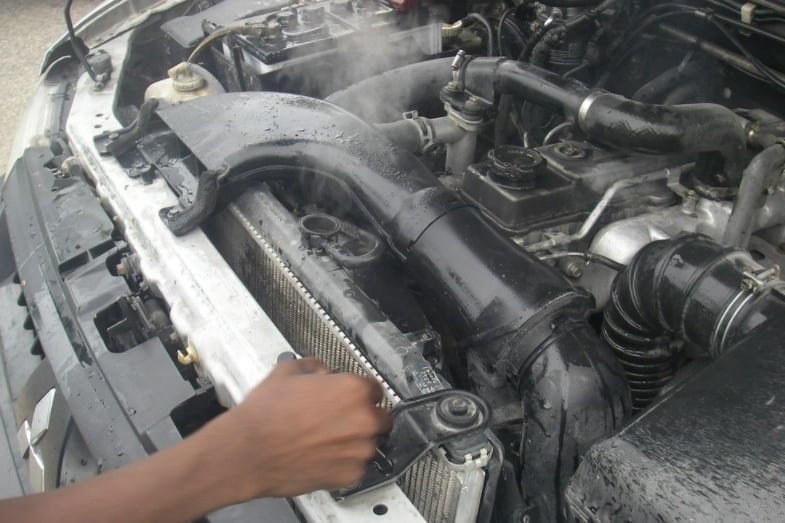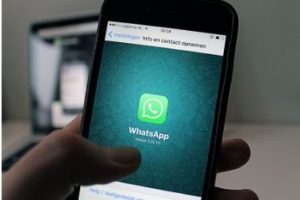How long does it take for a car to cool down? After you turn off your car’s engine, you may hear its fan still running. It is trying to cool itself down because an engine that is too hot will have issues. In this article, I will describe how long it takes for the engine to cool so that you avoid engine trouble.
How long does it take for a car to cool down? It usually takes a minimum of 30 minutes for an overheated engine to cool down and for you to handle it safely. If there’s steam coming out of the hood, you should not even try to lift it. Watch the temperature gauge. It should show you if the engine has already cooled down.
An overheated engine will produce steam in the radiator. If you open the hood without waiting for it to cool down, the steam that comes out of the radiator might burn your skin. In this case, just patiently wait for the engine to cool down.
Read on to learn more about how long it takes for a car to cool down and what you can do if you want to speed up the cooling process.
How Long Does It Take for a Car to Cool Down?
Typically, it will take at least 30 minutes before your car cools down. When the car engine overheats, you should wait at least 30 minutes before trying to inspect or handle it. Watch out if there is steam coming out of the hood, too. It is boiling water that can burn your skin.
The heat reduction is usually proportional to the difference in temperature between the surrounding environment and the engine. When the engine cools down close to the air temperature surrounding it, the amount of heat loss will be minimal. That is why it will take several hours to really cool the engine down to the last few degrees.
So, don’t just open the radiator cap right after you have turned the engine off. The coolant has already turned hot, and it can cause severe burns on your skin. On average, a car engine is said to have cooled down when you can safely handle it. Cooling down can be as long as 1 to 2 hours.
Again, this will depend on the surrounding temperature and the degree of heat generated by the engine. The time of cooling downtime will also vary from engine to engine. A major portion of engine design budgets is allotted to thermal engineering. The reason is to optimize the cooling capabilities and heat transfer of the car’s cooling system.
To be safe, you need to wait for 1 to 2 hours to allow the car to cool down before you can safely open the radiator cap. But if you want to check the coolant level, it is safer to wait for about 3 to 5 hours. Be aware that since the coolant has already expanded, the gauge will show a false high reading, which could be mistaken as still hot.
What Factors Determine How Long It Takes for a Car to Cool Down?
The longer it takes to cool down your car, the more damage it generates to your engine. Your car engine’s ability to cool down depends on several factors. They are as follows:
- How high the engine temperature got while the car is running;
- The amount and quality of heat insulation in the engine bay;
- The ambient or surrounding temperature in the place where the engine has overheated;
- The volume or amount of the engine coolant; and
- The type of material used in the construction of the engine block and head (i.e., engine blocks made of steel are not as quick to cool as those made of aluminum).
What Could Cause a Car to Be Hot for a Long Time?
Here are some of the reasons why your car engine can remain hot longer than it should be:

1. The Ambient Temperature Is Also Hot
If your car overheats in a place where it is also hot, it will slow down the time that the engine can cool down. If you can still drive your car, park it in the shade instead of under the sun’s heat.
2. There Is Lack of Engine Oil
The main function of the engine oil is to lubricate the engine parts so that it can reduce friction, which produces heat. If there’s insufficient oil in the engine, it will remain hot for a long time.
3. The Cooling Fan Is Malfunctioning
The function of the fan is to cool the engine. If it is malfunctioning, its cooling efficiency will be reduced.
4. The Water Pump Is Malfunctioning
The water pump’s function is to circulate the coolant in the water jacket that envelops the engine. If it malfunctions, it will not provide a 100 percent cooling effect to the engine.
5. The Fan Belt Is Broken
The fan belt transfers the electric motor’s motion to the fan that helps in cooling the engine. If it is broken, there is no transfer of power from the motor to the fan. The fan will not be able to rotate to do its work.
6. There Is Blockage in the Radiator
The radiator consists of tiny water tubes that circulate water around the radiator fins to help cool the engine. If there are blockages in these tubes, the efficiency of water circulation will be considerably reduced.
The engine cooling system of a typical car consists of four major components. They are the water pump, the radiator, the heater core, and the thermostat. Several hoses connect them together. These hoses also circulate the coolant throughout the system, including the car engine.
If one of these components malfunctions, the cooling system will not function 100 percent. Your engine will heat up, as well. If your car engine consistently overheats, it is a sign that there is something wrong with the cooling system. Your car needs a checkup from a cooling system professional before it sustains engine damage, which is more expensive to repair.
As an immediate remedy, you can top up or change the engine oil. You can also clean or overhaul the radiator, repair the water pump or the thermostat, or do whatever is needed to stop the engine from overheating. And then, have a professional car technician check and repair whatever is wrong with the cooling system.
We’ve answered the question, “How long does it take for a car to cool down?”; next, let’s look at some of the ways that can help cool down your car faster.
How Can You Cool Down Your Car Faster?
It can never be overemphasized: cooling down your car faster will help prevent more damage to the engine. Here are some of the ways to do this:
1. Perform Rapid Cooling to the Radiator, Not the Engine
To quickly cool the radiator, pour or spray water on it. Don’t do this on the engine, or it can cause a crack on the engine block. The radiator can handle this sudden temperature shock.
2. Rev the Engine Quickly
Start the engine and then quickly rev it for 1 to 2 seconds. This will help circulate the coolant through the water pump. Be sure that you have enough coolant before you perform this trick. Stop the engine a few times to help the coolant do its work.
3. Turn off the Engine but Turn the Key in the ‘on’ Position
If the key is in the ‘on’ position, the fan will continue running. This will speed up the cooling down of your car.
4. Fan the Car Interior
Open the front and the back windows on one side of your car. Then open the door on the opposite side of the car and swing it back and forth. This will have a fanning effect on the interior of the car. Do this at least three times.
5. Start the Engine and Turn Your Car’s Air Conditioning Setting to the Max
This trick will work in cars that have the option to select the ‘external’ air setting. If the AC switch in your car has an arrow that is entering the car, you have this option. In standard cars, the AC switch has a circular arrow.
If you select the external air setting, the cooler air outside will enter the car. Open all the car windows, as this trick will take a few minutes to take effect.

6. Open the Lower Air Vents
Heat and hot air rise while cold air stays down. Introduce cool air into the car through the openings on the floor. This will force hot air inside the car to rise and escape out of the windows.
Close the upper vents on the dashboard and at the base of the windshield. This will induce an upward flow of the air inside the car.
7. Open the Car Windows
Drive the car and keep its windows open for a couple of minutes. This will allow hot air from the engine and inside the car to escape. Keep doing this until the air in the vents is getting cooler than the temperature outside.
8. Switch to Recirculated Air and Close the Windows
If the air coming out of the air conditioner is already cool, close all the windows. Then switch to pre-cooled or recirculated air. Open the air vents and adjust the flow of air.
How Do Car Fans Work in Cooling Down Cars?
Engine cooling fans are an integral part of the car’s cooling system. When the car runs at low speed, its engine cooling fan moves the air through the radiator. Airflow is important in a running car because it removes heat from the coolant. The radiator acts as a conductor of heat. These fans only run when needed since they are controlled by temperature.
There are two basic types of engine cooling fans:
1. Electric Cooling Fan
The main function of this type of fan is to improve engine performance and reduce its emissions. These fan types can be installed in both rear and front-wheel-drive cars. A coolant sensor activates the cooling fan through a computer.
The coolant sensor detects an increasing temperature that is more than the normal limits. If it detects this abnormal rise in temperature, it will send a signal to close the fan relay control. A circuit fuse protects this relay control.
2. Manual Cooling Fan
This type of fan is connected to the drive pulleys of the engine. It is controlled by a thermo fan clutch, which is used to sense heat coming from the radiator. Also, it will engage when the car engine is running at high temperatures.
The thermo fan clutch is designed to be freewheeling when not engaged. It contains silicone grease, which expands when it is heated. A typical unit has a seal and a set of shaft bearings to retain the lubricant. It is typically bolted or attached to the engine’s water pump.
How to Avoid Getting Your Car Hot
It is much safer to avoid getting your car’s engine hot than to remedy the situation when it overheats. Follow the tips below on how you can prevent your car engine from overheating:
- Don’t park under direct sunlight. Park under a shade as long as it is possible.
- Keep the cooling system of your car well-maintained.
- When parking under the sun, cover the windshield with a sunshade.
- Wipe the surfaces of your car with a damp cloth when it is too hot.
- If the parking space is secured, leave the car windows slightly open.
- Keep your air conditioning system well maintained.
Conclusion – How Long Does It Take for a Car to Cool Down?
So, to recap, “How long does it take for a car to cool down?” It usually takes around 30 minutes for an overheated engine to cool down before you can handle it.
If there’s steam coming out of the car’s hood, you should not even try to lift it. Watch the temperature gauge. It should show you if the engine is already cooling down.

![How Long Does DayQuil Last? [How Long It Stays in Your System] how long does dayquil last](https://howchimp.com/wp-content/uploads/2021/06/how-long-does-dayquil-last-300x200.jpg)
![How Long Does DHL Take to Deliver? [DHL Delivery Time] How Long Does DHL Take to Deliver](https://howchimp.com/wp-content/uploads/2021/05/how-long-does-DHL-take-to-deliver-300x200.jpg)


